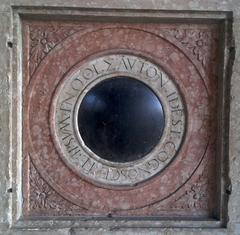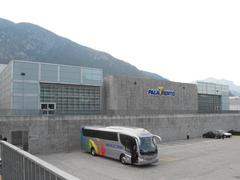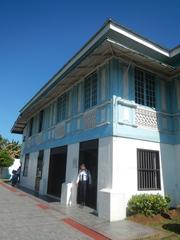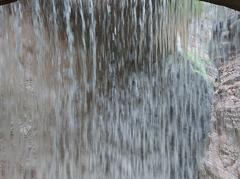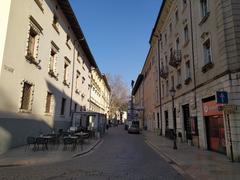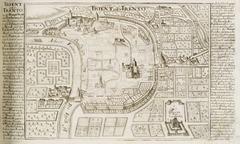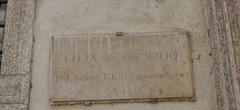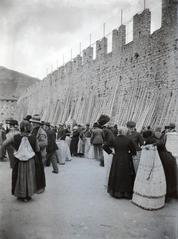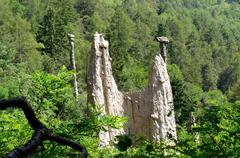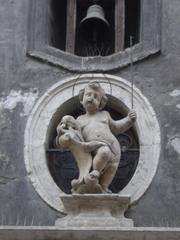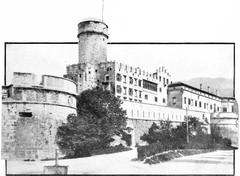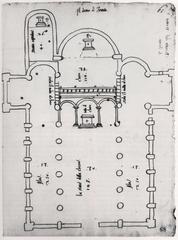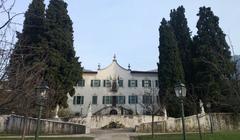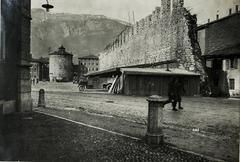Visiting La Marzola in Trento: Hours, Tickets, and Tips
Date: 01/08/2024
Introduction
La Marzola, a mountain situated in the Trentino region of Italy, stands as a testament to the rich historical and cultural heritage of the area. Known for its strategic importance throughout various historical periods, La Marzola offers a unique blend of ancient ruins, World War I fortifications, and vibrant local folklore. Nestled within the picturesque landscapes overlooking the Adige Valley, this mountain has witnessed the ebb and flow of different civilizations, including the Rhaetians and the Romans. With its panoramic views and well-preserved historical sites, La Marzola serves as both a natural sanctuary and a historical archive, attracting hikers, history enthusiasts, and cultural explorers alike. This guide aims to provide comprehensive information on the mountain’s history, cultural significance, and practical advice for visitors, ensuring an enriching experience for anyone planning a trip to La Marzola. For more information about the best times to visit and detailed hiking routes, you can refer to reliable sources such as Travellers Worldwide and Visit Trentino.
Table of Contents
- Introduction
- Ancient and Medieval History
- Austrian Fortifications
- World War I
- Cultural Significance
- Modern-Day Preservation
- Visitor Information
- Frequently Asked Questions (FAQ)
- Conclusion
Ancient and Medieval History
La Marzola has a rich historical tapestry that dates back to ancient times. The region around La Marzola was inhabited by the Rhaetians, an ancient Alpine people, before the Roman conquest. The strategic location of La Marzola, overlooking the Adige Valley, made it a significant vantage point for monitoring and controlling movement through the valley, which was a crucial route for trade and military campaigns.
During the Roman era, the area saw the construction of roads and fortifications to secure the region. The remnants of these ancient infrastructures can still be traced in the surrounding landscape, providing a glimpse into the region’s historical significance. The Roman influence persisted until the fall of the Western Roman Empire, after which the region experienced a series of invasions and migrations by various Germanic tribes.
Austrian Fortifications
In the more recent historical context, La Marzola played a notable role during the Austro-Hungarian period. The mountain’s strategic importance was recognized by the Austrians, who constructed fortifications in the area to defend against potential invasions. These fortifications were part of a broader network of military defenses designed to protect the southern borders of the Austro-Hungarian Empire.
The remains of these Austrian fortifications can still be seen today along the hiking trails of La Marzola. For instance, hikers on the SAT n. 412 trail can encounter the remnants of these historical structures, which serve as a poignant reminder of the region’s turbulent past.
World War I
La Marzola’s historical significance was further cemented during World War I. The mountain was part of the Italian Front, where fierce battles were fought between the Italian and Austro-Hungarian forces. The rugged terrain of La Marzola provided a natural defense, and both sides constructed extensive trench systems and artillery positions.
The remains of these World War I fortifications are scattered across the mountain, particularly near the Bivacco R. Bailoni, where hikers can explore the remnants of cannon posts and trenches. These historical sites offer a sobering insight into the harsh conditions faced by soldiers during the war and the strategic importance of La Marzola in the broader context of the conflict.
Cultural Significance
Beyond its military history, La Marzola holds cultural significance for the local communities. The mountain has long been a site of local legends and folklore, with stories passed down through generations about its mystical qualities and the spirits that inhabit its forests. These cultural narratives add a layer of mystique to the mountain, making it a place of both historical and cultural pilgrimage.
The local traditions and festivals often incorporate elements of these legends, celebrating the mountain’s role in the cultural heritage of the Trentino region. Visitors to La Marzola can experience this cultural richness through local events and by engaging with the community, who are proud of their historical and cultural ties to the mountain.
Modern-Day Preservation
Today, La Marzola is not only a site of historical interest but also a protected natural area. Efforts have been made to preserve both the natural environment and the historical artifacts found on the mountain. The hiking trails, such as the Marzola Round, are carefully maintained to ensure that visitors can explore the historical sites without causing damage to the delicate ecosystem.
Educational initiatives have also been implemented to inform visitors about the historical significance of La Marzola. Information boards along the trails provide context about the ancient and modern history of the area, helping to foster a deeper appreciation for the mountain’s historical legacy.
Visitor Information
Visiting Hours
La Marzola is open to visitors year-round, but the best times to visit are during the spring and autumn months when the weather is mild. Specific attractions such as the historical fortifications and hiking trails are accessible during daylight hours.
Tickets
There is no entrance fee to explore La Marzola itself. However, guided tours and special events may require a ticket. It is advisable to check with local tourism offices or official websites for the most up-to-date information on ticket prices and availability.
Travel Tips
- Accessibility: La Marzola is accessible by car via local roads. There are several parking areas near the main trailheads.
- Nearby Attractions: While visiting La Marzola, consider exploring other nearby historical sites in the Trentino region, such as the city of Trento and its Castello del Buonconsiglio.
- Guided Tours: For a deeper understanding of La Marzola’s history, join a guided tour. These tours often provide detailed insights and access to areas that may not be easily accessible otherwise.
- Photography: La Marzola offers numerous photographic opportunities, from stunning landscapes to historical ruins. Early morning and late afternoon offer the best lighting conditions.
Frequently Asked Questions (FAQ)
Q: What are the best times to visit La Marzola?
A: The best times to visit are during the spring and autumn months when the weather is mild.
Q: Are there any entrance fees for La Marzola?
A: There is no entrance fee to explore La Marzola itself. However, guided tours and special events may require a ticket.
Q: How can I access La Marzola?
A: La Marzola is accessible by car via local roads. There are several parking areas near the main trailheads.
Q: What should I bring for a visit to La Marzola?
A: It is advisable to bring comfortable hiking shoes, water, snacks, and a camera for capturing the stunning scenery.
Q: Are there guided tours available?
A: Yes, guided tours are available and provide detailed insights into the history and significance of La Marzola.
Conclusion
La Marzola, with its rich historical background and cultural significance, offers a captivating journey through time for its visitors. From its ancient roots with the Rhaetians and Romans to its strategic importance during the Austro-Hungarian period and World War I, the mountain stands as a monument to human resilience and ingenuity. The preserved fortifications and trails provide not only a glimpse into the past but also an opportunity to enjoy the natural beauty of the Trentino region. Visitors can immerse themselves in local folklore, enjoy the scenic hikes, and explore nearby attractions such as the city of Trento and its historical landmarks. By following this guide, you can ensure a memorable visit, whether you’re drawn by the historical depth, the cultural richness, or the stunning natural vistas of La Marzola.
For more updates and information, download the Audiala mobile app, check out related posts, or follow us on social media.
References
- Visit Trentino, 2024, Visit Trentino source url
- Travellers Worldwide, 2024, Travellers Worldwide source url
